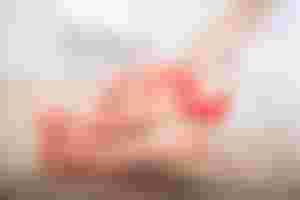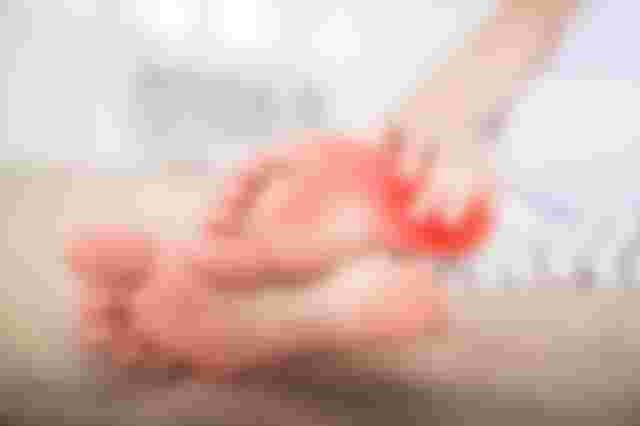When a certain part of the body is damaged and produces pain, this sensation will be transmitted to the center of the brain , and you will suddenly feel pain.
Pain is the most prominent manifestation of human perception, and it is also a symptom that cannot be ignored. The human body will not suffer from pain for no reason. This is a manifestation of physical damage.

Many people have experienced heel pain, most of which is caused by standing too long, strenuous exercise or inappropriate footwear, but after rest or changing a pair of comfortable footwear, the pain will be significantly improved.
If you often have heel pain and you can't relieve the rest, you should pay attention to the following diseases:
1. Heel bone spurs
Bone spurs are one of the symptoms of bone hyperplasia, and are related to long-term physical work, long standing, and excessive exercise. These factors can cause periosteal damage. When the human body repairs the damaged periosteal, a layer of cartilage will accumulate to cover the injury. As a result, bone spurs are formed.
The heel is one of the key points of the human body when walking, so when walking excessively, it will be accompanied by symptoms such as tingling and numbness.
2. Plantar Fasciitis
In addition to bone spurs, plantar fasciitis is also a major cause of pain.
The plantar fascia is a banded fiber structure located on the sole of the foot, and is the main structure for maintaining the human arch.
The occurrence of plantar fasciitis is generally related to factors such as decreased fascia elasticity, obesity, unfit shoes, and long-term standing and walking . These conditions will cause the plantar fascia tension to increase, causing local damage and inflammation.
The patient will obviously feel pain in the heel area, especially when walking in the early morning, and the symptoms will improve after a little activity.
This is because the lower foot is in a relaxed and sagging state during sleep, and the plantar fascia and Achilles tendon are prone to spasm , which causes greater stress when walking in the morning and pain occurs.
The fascia stretches after proper activity, and the pain will gradually ease.
3. Achilles tendinitis
The cross-section of the Achilles tendon is much smaller than that of the muscle tissue, so the tension of the Achilles tendon tissue is usually higher than that of the muscle. After a lot of long-term labor and exercise, it will lead to acute and chronic strain of the Achilles tendon, which leads to sterile inflammation.
Patients often feel heel pain, tenderness, and stiffness , especially after the activity, and this pain can occur in any area of the Achilles tendon. As the disease progresses, the tendon will gradually swell, forming knots in the diseased area Section.
4. Gout
Gout is one of the most common diseases in modern times, and its root cause is "hyperuricemia"!
Under normal circumstances, the daily production and discharge of uric acid in the body is proportional, and when the uric acid metabolism is imbalanced, blood uric acid will also increase accordingly.
At the same time, uric acid will also form urate crystals in the body , which will continue to accumulate in the patient's joints and eventually cause gouty arthritis.
Under normal circumstances, the first pain is mainly the joints of the lower extremities, especially the joint pain of the big toe is particularly common, and some patients will also have heel pain symptoms.
The pain is often unbearable, but the pain is not long, and the symptoms can disappear within a few hours or a day, and the pain symptoms will come back in the next attack.
Many people have heel pain. The most common method is to soak their feet. Is it useful?
In fact, it depends on what causes the pain. If it is gout, foot soaking does not play any role at all. For other diseases, it may have a slight relief effect.But after all, if you want to cure the pain, you must cure the disease and treat it from the root.
Therefore, if you find that the heel pain does not improve for a long time, you should go to the hospital.

Heals is the most painful part of the foot. If care is not taken someone will be unable to work properly.